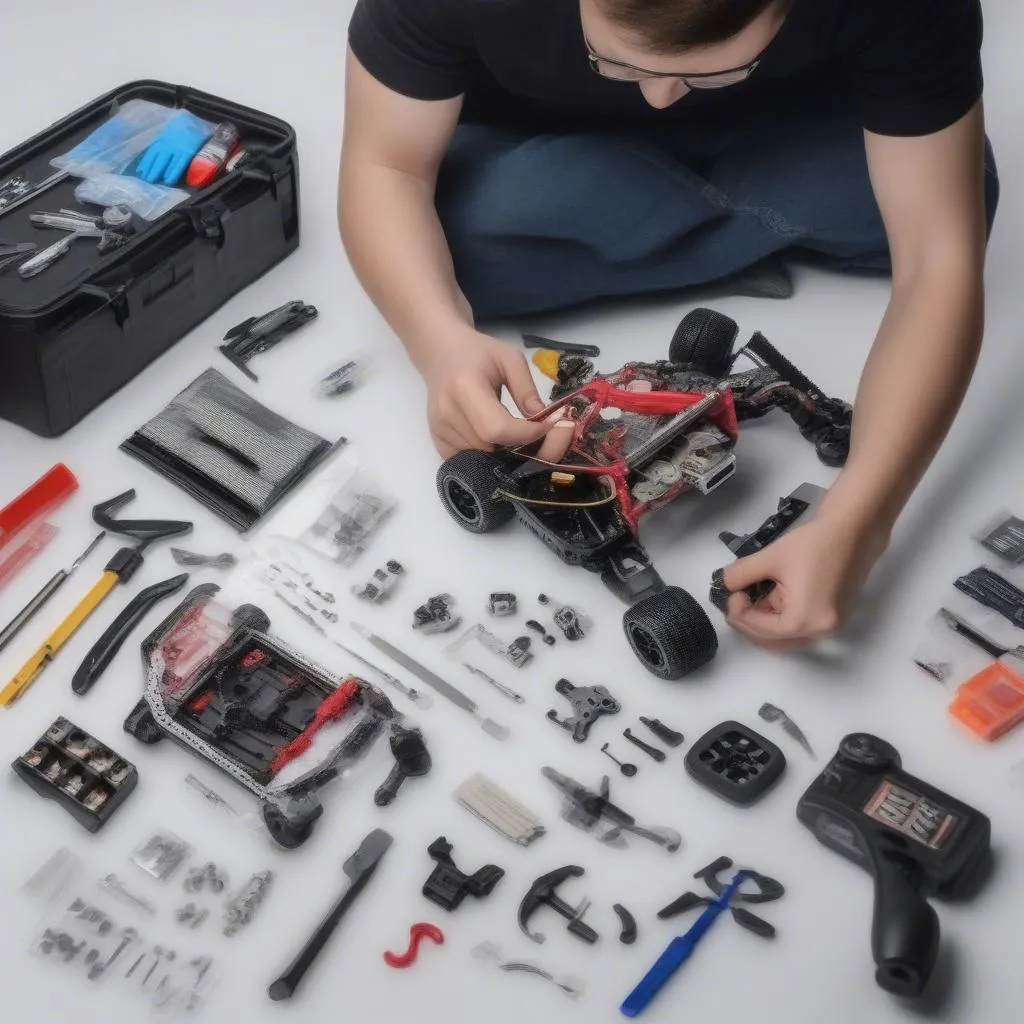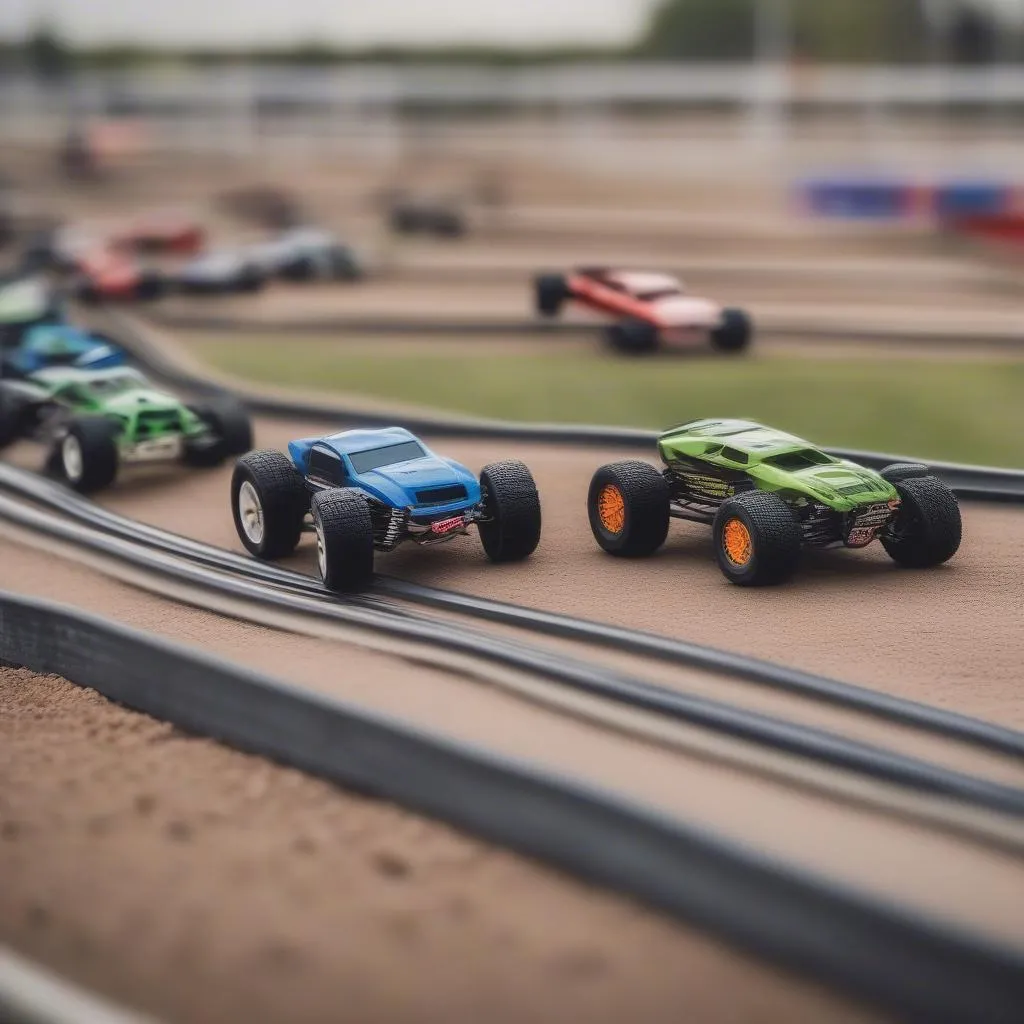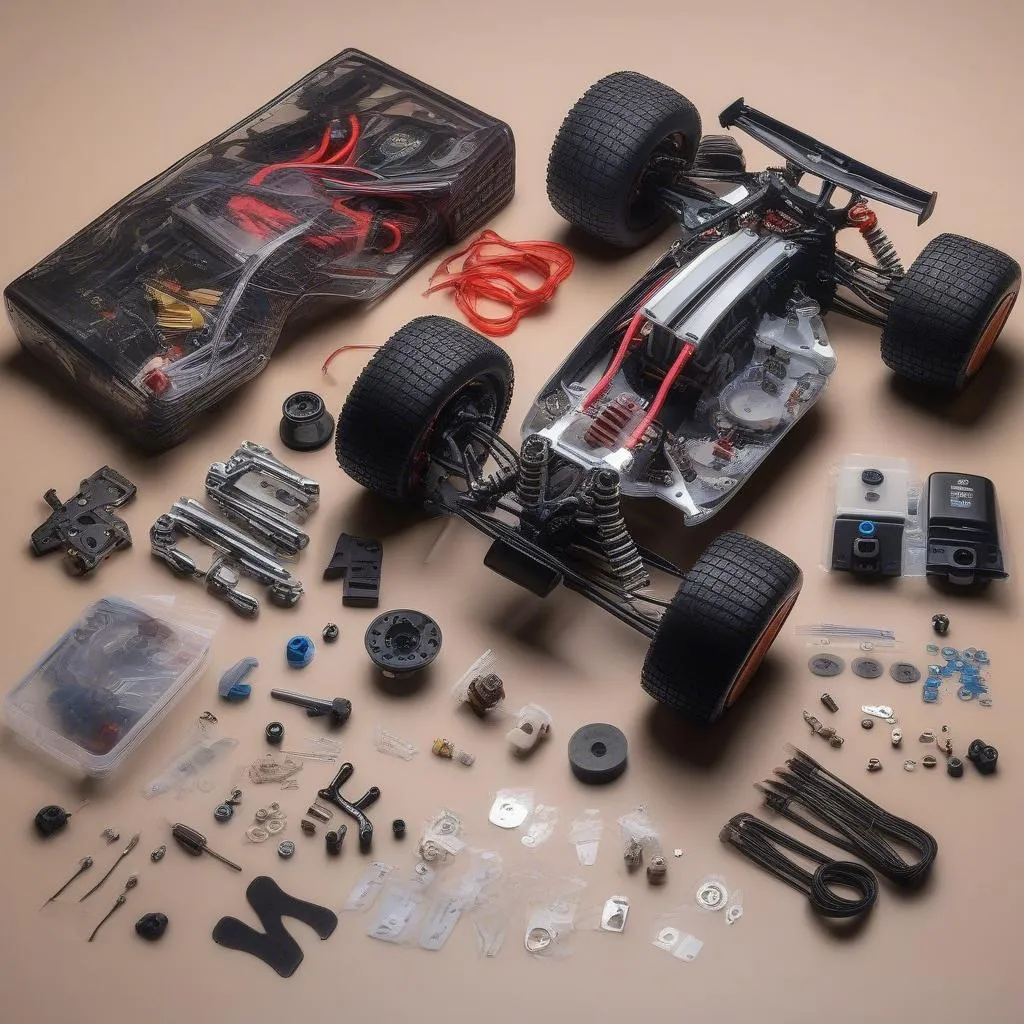Have you ever dreamed of designing and building your own race car? The thrill of racing, the satisfaction of creating something with your own hands, and the potential for customization are all part of the allure of building an RC car. But where do you start? It can feel daunting, especially if you’re new to the world of RC cars.
This guide will walk you through the process of building an RC car kit, from choosing the right kit to assembling it and getting it ready for its first race. We’ll cover everything you need to know, from the basics of RC car mechanics to some tips and tricks for getting the most out of your build.
The Meaning of Building an RC Car Kit: A Comprehensive Look
The act of building an RC car kit is more than just a hobby. It’s a gateway to understanding the intricate workings of vehicles, a way to unleash your creativity, and a platform for honing your technical skills.
Let’s delve deeper into the various facets of this endeavor:
From a Technical Perspective
Building an RC car kit involves understanding the basics of mechanics, electronics, and aerodynamics. You’ll learn about the different components that make up an RC car, how they work together, and how to adjust them to achieve optimal performance.
From a Creative Perspective
Building an RC car kit allows you to express your creativity. You can choose a kit that suits your style, customize it with paint, decals, and upgrades, and ultimately build a car that is truly unique.
From a Financial Perspective
Building an RC car kit can be a relatively inexpensive way to get into the world of RC cars. You can start with a basic kit and gradually upgrade it as your skills and budget allow. It’s a more affordable option compared to buying a ready-made RC car, especially if you’re looking for something high-performance.
Building Your First RC Car Kit: A Step-by-Step Guide
Let’s get started! Here’s a step-by-step guide to building your first RC car kit:
1. Choose Your RC Car Kit
The first step is choosing the right kit. Consider the following factors:
- Skill level: There are kits for beginners, intermediate builders, and experts. Choose a kit that is appropriate for your experience level.
- Type of car: There are different types of RC cars, such as off-road buggies, on-road touring cars, and monster trucks. Consider your interests and where you plan to drive the car.
- Budget: RC car kits range in price from a few dollars to hundreds of dollars. Set a budget and find a kit that fits it.
Example: For beginners, a great starting point is the Traxxas Rustler 4×4 kit. It’s a robust, durable off-road buggy with a powerful motor and a user-friendly design.
2. Gather Your Tools
You’ll need a few basic tools to build your RC car kit:
- Phillips screwdriver: Used to assemble the car’s chassis, body, and other components.
- Hex drivers: Used to tighten and loosen the screws and nuts that hold the car together.
- Scissors: Used to cut out the body and wing.
- Hobby knife: Used for trimming parts and applying decals.
- Glue: Used to bond body panels, tires, and other components.
- Work surface: Choose a clean, flat surface to work on.
3. Read the Instructions
Before starting to build, take some time to read the instructions carefully. They will guide you through the assembly process, including diagrams and step-by-step instructions.
4. Assemble the Chassis
The chassis is the foundation of the car. Start by assembling the main frame, suspension, and drivetrain components. Pay attention to the order of assembly and make sure everything is securely fastened.
5. Install the Electronics
Next, install the motor, battery, ESC (electronic speed controller), and servo. Make sure all the wires are connected correctly and securely.
6. Mount the Body
Cut out the body and wing, then mount them onto the chassis. Use glue to secure the body panels and ensure a snug fit.
7. Set Up the Radio
Install the battery in the transmitter, then turn it on. Next, bind the transmitter to the receiver in the car, following the instructions in the manual.
8. Test Drive
Once the car is fully assembled, it’s time for a test drive. Choose a safe, open area and slowly test the car’s functions. Make sure everything is working properly before taking it out for a full race.
Troubleshooting: Common Questions and Solutions
Building your first RC car can present challenges. Here are some common questions and solutions:
Question: My RC car won’t turn.
Answer: Check the servo connection and make sure it’s securely plugged in. Also, inspect the servo arm to make sure it’s not broken or disconnected.
Question: My RC car is moving very slowly.
Answer: Make sure the battery is fully charged. Check the motor connections and ESC connections to ensure they are secure.
Question: My RC car keeps overheating.
Answer: This could be due to a faulty ESC, a blocked motor vent, or a lack of lubrication. Inspect the ESC and motor for any signs of damage or overheating.
Question: Where can I find replacement parts for my RC car kit?
Answer: Most hobby shops carry a wide range of replacement parts for popular RC car kits. You can also find them online from various retailers.
Taking Your RC Car Kit to the Next Level: Tips and Tricks
Once you’ve built your first RC car, you can start exploring ways to improve its performance and customize it to your liking. Here are a few tips and tricks:
- Upgrade the motor: A more powerful motor can give your car a significant speed boost.
- Upgrade the ESC: A better ESC can handle more power and offer features such as adjustable braking and throttle response.
- Change the gearing: Adjusting the gearing can affect your car’s top speed and acceleration.
- Upgrade the suspension: A better suspension can improve your car’s handling and stability on rough terrain.
- Paint and decorate: Customize your car’s body with paint, decals, and other accessories.
Where to Go From Here: Exploring the RC Car World
Building an RC car kit is just the beginning of your journey in the world of RC cars. There are endless possibilities for customization, racing, and learning. Here are a few things to consider next:
- Join an RC club: RC clubs provide a great way to meet other RC enthusiasts, learn from experienced racers, and participate in races.
- Attend RC races: Watching professional RC races is a great way to see the latest technology and learn from the best.
- Explore different RC car types: There are many different types of RC cars, such as drift cars, crawlers, and airplanes.
 Building an RC Car Kit
Building an RC Car Kit
 RC Car Racing
RC Car Racing
 RC Car Parts
RC Car Parts
A World of Possibilities: Taking the Next Step
Building an RC car kit is a rewarding and fun experience. It’s a chance to learn new skills, express your creativity, and build something with your own two hands.
So, what are you waiting for? Grab a kit, gather your tools, and start building!
If you need help with choosing the right kit, finding parts, or learning how to assemble and maintain your RC car, don’t hesitate to contact us! Our team of experts is available 24/7 to answer any questions you may have.
Contact us via WhatsApp at +84767531508 and we’ll be happy to assist you.
Looking for more information on car maintenance and repair? Check out these related articles:
- How to Wire and Detail Model Car Engines: PDF
- 3D Print Car Model Kit: A Comprehensive Guide
- Car AC Colder on One Side: Diagnosis and Repair
- Car Washer Fluid Water: What You Need to Know
Don’t forget to leave a comment below and share your experience building your first RC car kit!